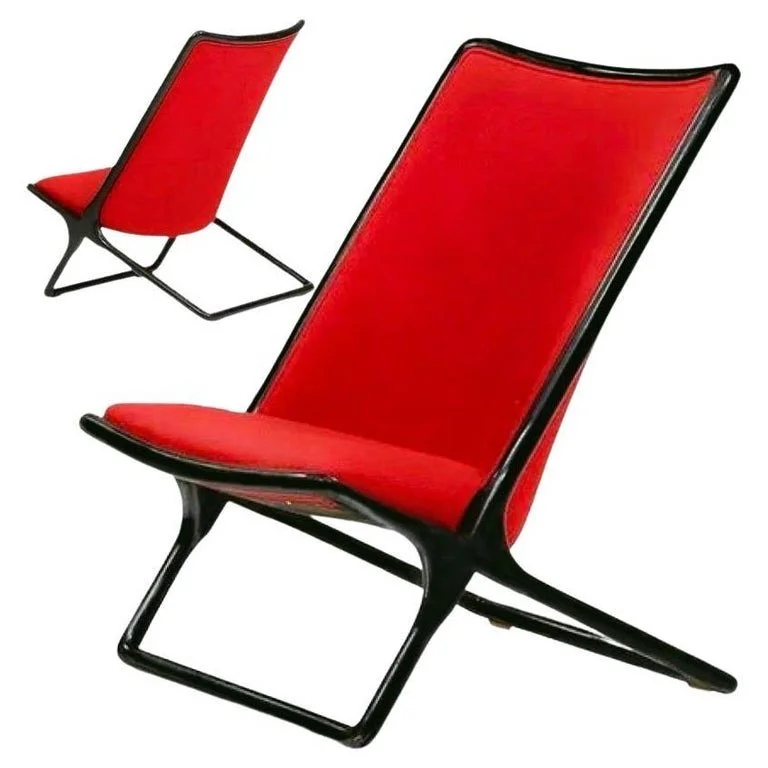Ward Bennett for Brickel Black Ash Scissor Lounge Chair, Red Wool Bouclé, 1984
Ward Bennett for Brickel Black Ash Scissor Lounge Chair, Red Wool Bouclé, 1984
Ward Bennett for Brickel Assoc. Black ash scissor lounge chair, red wool bouclé, 1984, New York.
Black lacquered ash, red wool upholstery, metal tags to each.
Ward Bennett’s story is a remarkable one. His career began at age 13, when he quit school to work in the garment district in New York City. At 15, he designed his first clothing collection; at 16 he left for Europe, where he continued working on fashion design.
While in Europe, he attended art schools in Florence and Paris, but he was mostly self-taught, with skills that ranged from illustrating, sculpting, and jewelry-making to furniture, interior, and home design. “I learn from people,” he once said, referencing a long line of influences, including Hattie Carnegie, Hans Hoffman, and Georgia O’Keeffe.
Bennett eventually settled back in New York, where his reputation earned him some of the day’s most affluent clients: David Rockefeller and Chase Manhattan Bank, Tiffany & Co., Sasaki, Italian industrialist Gianni Agnelli, Rolling Stone founder Jann Wenner. Another—former President Lyndon Baines Johnson—asked Bennett to design a chair for his presidential library that would be “a cross between a barroom chair and a courtroom chair with a little Western saddle.”
Bennett sought to create a design style that was uniquely American, versus the popular European design styles of the 1960s and 70's. His style was called "sensual minimalism" for his blending of industrial design and aesthetic look.
Simplicity and comfort were always his goals, and Bennett says he learned a great deal about lumbar support, the importance of chair arms, and designing the right “pitch” from working with the doctor who treated John F. Kennedy’s bad back.
Bennett, who died in 2003, is also considered the first American to use industrial materials for home furnishings, well before the high-tech look of the 1970s became popular. He was hailed by the American Institute of Architects for “transforming industrial hardware into sublime objects.”
“There was nothing superfluous about Ward’s designs, nothing ‘extra,’”says Tim deFiebre, Bennett’s former assistant and keeper of his legacy. “They were always honed down to their bare essence, and that is what his work is about.”
Many of Bennett’s designs are in the Museum of Modern Art’s permanent collection as well as in the Cooper-Hewitt National Design Museum; he is also in Interior Design magazine’s Hall of Fame.
Image 7: Bennett in his famous apartment after its initial renovation, sitting in his famed scissor chair in front of a white worktable topped with glasses he designed. Besides designing interiors and furniture, Bennett worked on textiles and tabletop objects. Photo courtesy of Michael Pateman via New York Magazine.
Image 8: Bennett's home in East Hampton. Photo courtesy of Peter Aaron/Otto.
Image 9: Photographed by Horst P. Horst for the November 15, 1964, issue of vogue, a model poses in Bennett’s apartment at the Dakota.

